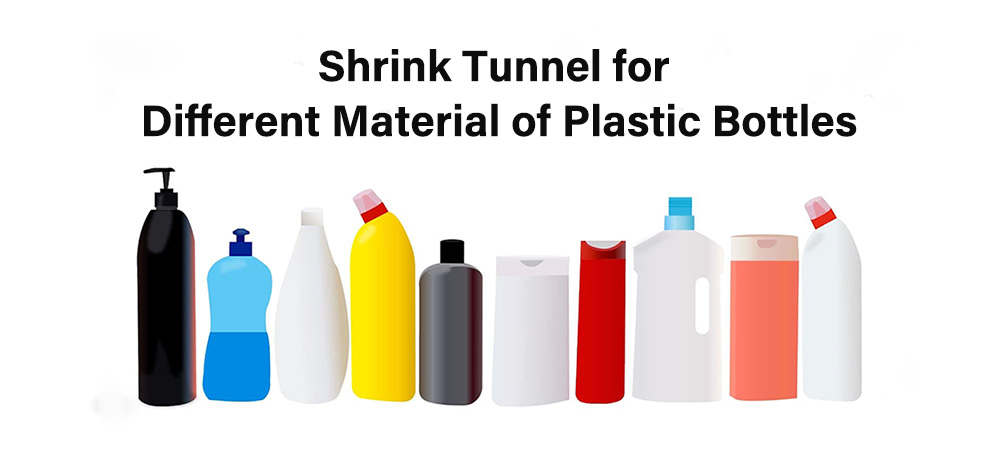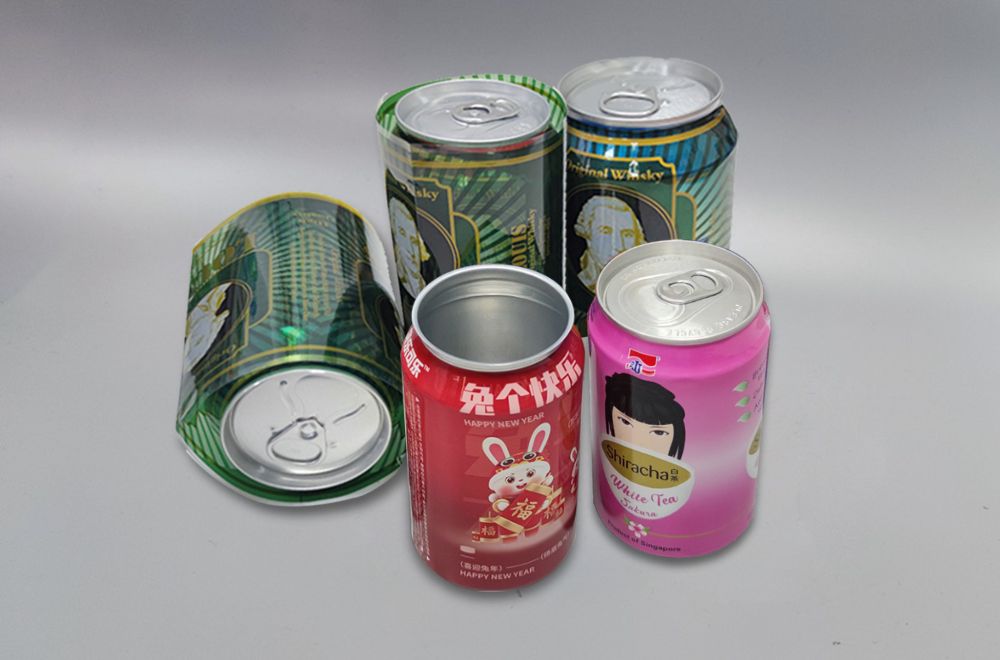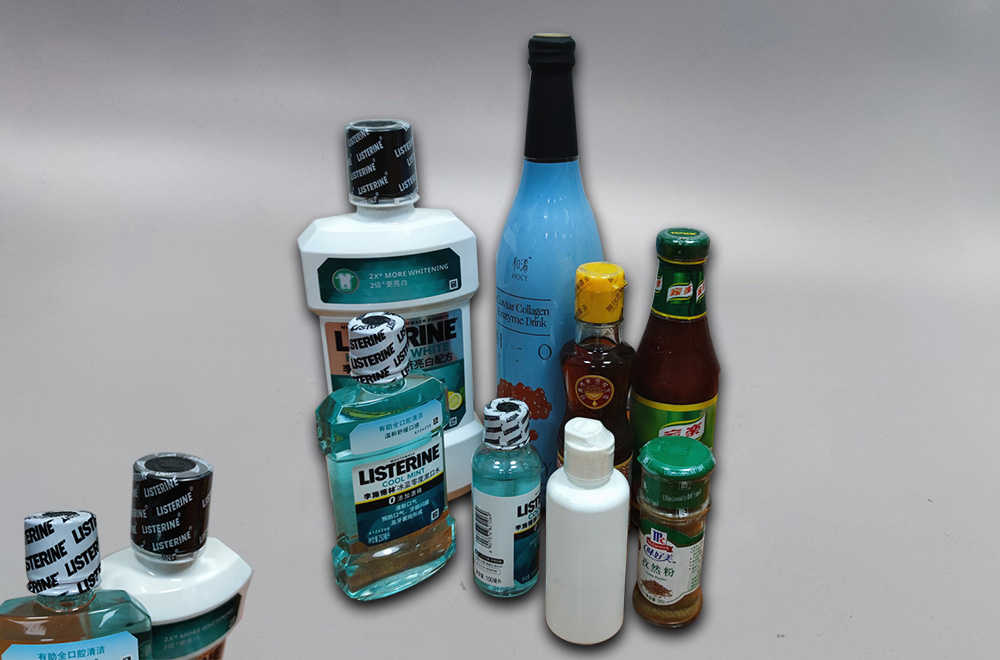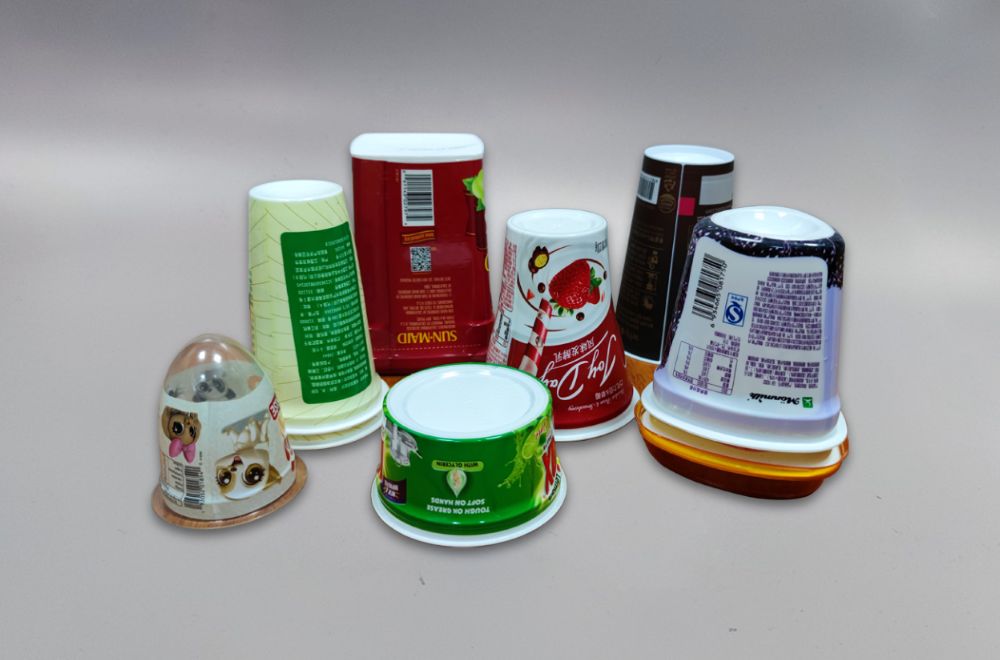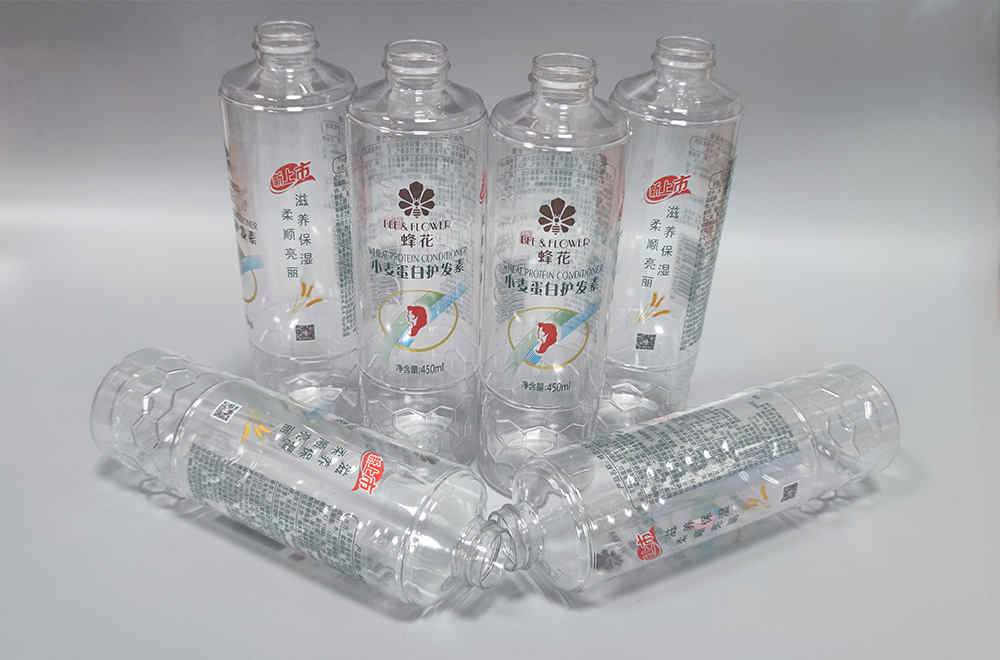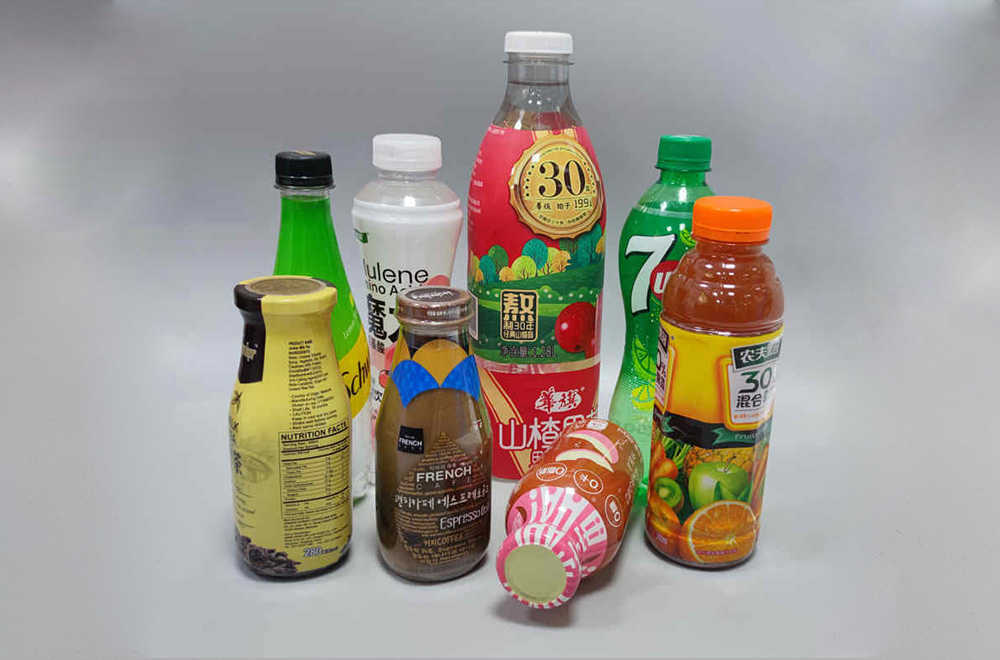عالم الزجاجات البلاستيكية متنوعة بقدر ما هو واسع. إنها جزء لا يتجزأ من الحياة الحديثة ، من عصير الصباح إلى المياه بعد التمرين. ومع ذلك ، عندما يتعلق الأمر بوضع تسميات الأكمام ، يحدث اعتبار رئيسي: كيف نختار نفق تقلص الصحيح للزجاجات البلاستيكية في السوق؟ دعونا نتعامل مع المزيج الرائع من العلوم والتجارة وراء هذا الاختيار.
إن اختيار نفق تقليص لزجاجات بلاستيكية مختلفة ليس علاقة واحدة تناسب الجميع. العوامل أولاً للنظر فيما يلي:
- – مادة الزجاجة البلاستيكية
- – سمك الزجاجة
- – أبعاد الزجاجة
- – موضع تسمية الانكماش على الزجاجة
- – متطلبات سرعة الإنتاج
- – هل هي زجاجة مملوءة أم زجاجة فارغة؟
يعد تحقيق توازن مثالي بين جميع العناصر أمرًا ضروريًا للعثور على أفضل نفق تقلص.
خصائص مواد الزجاجة البلاستيكية المختلفة
الزجاجات البلاستيكية عبارة عن حاويات مصنوعة من أنواع مختلفة من البلاستيك ، مثل PET و HDPE و LDPE و PP و PC و PS و PVC. كل مادة لها وظيفة فريدة.
1. زجاجات الحيوانات الأليفة (polyethylene terephthalate):
عادة ما تصنع زجاجات الحيوانات الأليفة من خلال صب ضربة. يتم تسخين التشكيلات ، وهي حيوان أليف يشبه أنبوب الاختبار بأعلى برغي مصبوب ، ثم يتم تفجيره إلى قالب لتحقيق الشكل المطلوب.
– صفات:
– واضحة وخفيفة الوزن.
– حاجز جيد ضد الأكسجين وثاني أكسيد الكربون والرطوبة – مما يجعلها مثالية للمشروبات الغازية.
– من السهل إعادة التدوير والبلاستيك المعاد تدويره على مستوى العالم.
– حساسة لضوء الأشعة فوق البنفسجية.
2. زجاجات HDPE (البولي إيثيلين عالي الكثافة):
عادة ما يتم إنشاء زجاجات HDPE من خلال صب ضربات البثق. يتم بثق البلاستيك المنصهر في باريسون على شكل أنبوب جوفاء. ثم يتم إرفاق هذا داخل قالب ، ويتم تفجير الهواء فيه ، مما يجبر البلاستيك على التوفيق بين القالب.
– صفات:
– غير شفاف وله بنية أكثر جوهرية من LDPE.
– مقاومة للعديد من المذيبات.
– يستخدم عادة لمنتجات مثل الشامبو والمنظفات وزيت المحرك.
– يمكن إعادة تدويرها بسهولة.
3. زجاجات LDPE (البولي إيثيلين منخفض الكثافة):
يتم إنتاج زجاجات LDPE أيضًا باستخدام صب ضربة البثق ولكنها تختلف في خصائص الراتنج.
– صفات:
– أكثر شفافة من HDPE.
– مرنة مع شعور أكثر ليونة.
– تستخدم للزجاجات القابلة للتغليف وأفلام التغليف.
– مقاومة للأحماض والقواعد والزيوت النباتية.
4. زجاجات PVC (كلوريد البولي فينيل):
يتم إنتاج زجاجات PVC باستخدام صب ضربة. ومع ذلك ، نظرًا لأن PVC أكثر صلابة ، فغالبًا ما يحتاج إلى بلائنات لجعلها مرنة لتطبيقات محددة.
– صفات:
– يمكن أن تتراوح من صلبة إلى مرنة.
– لديه وضوح جيد.
– بشكل طبيعي مقاومة للزيوت والشفى.
– أقل قابلة لإعادة التدوير من PET أو HDPE بسبب محتوى الكلور.
5. زجاجات PP (polypropylene):
عادة ما يتم إنشاء زجاجات PP من خلال صب ضربة الحقن. يتم حقن البلاستيك المنصهر في قالب لتشكيل أنبوب بلاستيكي ، ثم يتم تفجيره في شكله النهائي.
– صفات:
– لديه نقطة انصهار عالية ، مما يجعلها مناسبة للمنتجات التي تحتاج إلى شغل ساخنة.
– غالبًا ما تستخدم في الكاتشب أو الشراب أو المنتجات التي تحتاج إلى أن تكون ميكروويف.
– مقاومة للدهون ومعظم الأحماض.
– يمكن أن تكون شبه شبكية إلى جامدة.
6. زجاجات PS (البوليسترين):
PS يستخدم في المقام الأول للتطبيقات الصلبة ويتم إنتاجه من خلال صب الحقن أو البثق للألواح.
– صفات:
– يمكن أن تكون واضحة (للأغراض العامة) أو غير شفافة (عالية التأثير).
– تستخدم لمنتجات مثل حاويات الزبادي أو مائدة متاح.
– هش مع مرونة محدودة.
– حساسة للإشعاع الأشعة فوق البنفسجية ويمكن أن أصفر مع مرور الوقت.
يساعد فهم خصائص وعمليات التصنيع لكل نوع من أنواع الزجاجة البلاستيكية في تحديد أفضل تطبيقاتها في الحياة اليومية. سواء أكان تخزين مشروب ، أو سائل لزج مثل الكاتشب ، أو التغليف لمستحضرات التجميل ، فإن كل نوع بلاستيكي يوفر مزايا فريدة.
ما هي درجة حرارة تقلص هذه الزجاجات البلاستيكية؟
يمكن أن تختلف مقاومة الحرارة لهذه المواد البلاستيكية ودرجة الحرارة التي تبدأ فيها بالتقلص أو التشوه بناءً على عدة عوامل ، مثل الإضافات ، وتقنيات المعالجة ، ودرجات الراتنج المحددة. ومع ذلك ، إليك بعض الأرقام العامة للبلاستيك الذي ذكرته:
1. الحيوانات الأليفة (polyethylene terephthalate):
– نقطة الانصهار: 240 درجة مئوية – 260 درجة مئوية (464 درجة فهرنهايت – 500 درجة فهرنهايت)
– درجة حرارة الانكماش: يمكن للحيوانات الأليفة عادة تحمل درجات الحرارة حتى حوالي 70 درجة مئوية (158 درجة فهرنهايت). عادة ما تكون درجة الحرارة التي يبدأ فيها PET في الانكماش حوالي 70 درجة مئوية إلى 80 درجة مئوية (158 درجة فهرنهايت إلى 176 درجة فهرنهايت) ، ولكن هذا يمكن أن يختلف بناءً على صياغة محددة ومعالجة.
– ملاحظة: على الرغم من أن PET لديها نقطة انصهار عالية ، فقد يبدأ في التشوه في ظل ظروف أقل بكثير من هذا ، خاصة عند الحمل.
2. HDPE (البولي إيثيلين عالي الكثافة):
– نقطة الانصهار: 120 درجة مئوية – 180 درجة مئوية (248 درجة فهرنهايت – 356 درجة فهرنهايت)
– درجة حرارة الانكماش: يمكن أن يتحمل HDPE عادة درجات الحرارة تصل إلى 110 درجة مئوية إلى 120 درجة مئوية (230 درجة فهرنهايت إلى 248 درجة فهرنهايت). يبدأ في تقليص أو تشوه في درجات حرارة حوالي 85 درجة مئوية إلى 100 درجة مئوية (185 درجة فهرنهايت إلى 212 درجة فهرنهايت).
– ملاحظة: تشتهر HDPE بقدرته على تحمل درجات حرارة أعلى قليلاً من البلاستيك القياسي الأخرى.
3. LDPE (البولي إيثيلين منخفض الكثافة):
– نقطة الانصهار: 105 درجة مئوية – 115 درجة مئوية (221 درجة فهرنهايت – 239 درجة فهرنهايت)
– درجة حرارة الانكماش: يمكن لـ LDPE تحمل درجات حرارة تصل إلى حوالي 80 درجة مئوية إلى 100 درجة مئوية (176 درجة فهرنهايت إلى 212 درجة فهرنهايت). يبدأ بالتقلص عند حوالي 75 درجة مئوية إلى 85 درجة مئوية (167 درجة فهرنهايت إلى 185 درجة فهرنهايت).
– ملاحظة: LDPE أقل مقاومة للحرارة من HDPE.
4. PVC (كلوريد البولي فينيل):
– نقطة الانصهار: 160 درجة مئوية – 210 درجة مئوية (320 درجة فهرنهايت – 410 درجة فهرنهايت)
– درجة حرارة الانكماش: يمكن أن تعالج PVC الصلب عادةً درجات حرارة تصل إلى حوالي 60 درجة مئوية إلى 80 درجة مئوية (140 درجة فهرنهايت إلى 176 درجة فهرنهايت) ، في حين أن PVC المرنة (مع الملدنات) قد تحمل درجات حرارة أقل قليلاً. يبدأ PVC في الانكماش عند حوالي 60 درجة مئوية إلى 70 درجة مئوية (140 درجة فهرنهايت إلى 158 درجة فهرنهايت).
– ملاحظة: يمكن تغيير مقاومة الحرارة لـ PVC بشكل كبير مع إضافات ، وخاصة الملدنات.
5. PP (polypropylene):
– نقطة الانصهار: 160 درجة مئوية – 170 درجة مئوية (320 درجة فهرنهايت – 338 درجة فهرنهايت)
– درجة حرارة الانكماش: يحتوي PP على نقطة انصهار عالية ، مما يجعلها مناسبة للتطبيقات حتى 130 درجة مئوية إلى 170 درجة مئوية (266 درجة فهرنهايت إلى 338 درجة فهرنهايت). يبدأ في تقليص أو تشوه في درجات حرارة حوالي 100 درجة مئوية إلى 130 درجة مئوية (212 درجة فهرنهايت إلى 266 درجة فهرنهايت).
– ملاحظة: لدى PP مقاومة جيدة للحرارة وغالبًا ما يتم اختيارها للتطبيقات التي يجب أن تكون فيها العناصر آمنة للميكروويف.
6. PS (البوليسترين):
– نقطة الانصهار: اعتمادًا على النوع ، فإن PS للأغراض العامة له نقطة انصهار تبلغ حوالي 240 درجة مئوية (464 درجة فهرنهايت).
– درجة حرارة الانكماش: يمكن أن تتعامل PS عادةً مع درجات حرارة تصل إلى 70 درجة مئوية إلى 90 درجة مئوية (158 درجة فهرنهايت إلى 194 درجة فهرنهايت). يبدأ في الانكماش عند حوالي 70 درجة مئوية إلى 85 درجة مئوية (158 درجة فهرنهايت إلى 185 درجة فهرنهايت).
– ملحوظة: PS هشة نسبيًا ويؤدي بشكل سيئ تحت درجات حرارة عالية مثل بعض المواد البلاستيكية الأخرى المذكورة.
من المهم أن نفهم أن هذه القيم هي تقريبية ويمكن أن تختلف بناءً على درجة محددة من البلاستيك والإضافات المستخدمة وعوامل أخرى. علاوة على ذلك ، فأنت تريد التأكد من أن المواد البلاستيكية لا تتعامل مع نقطة الانصهار لمعظم التطبيقات. النظر في هامش السلامة أقل من درجات الحرارة هذه ، وخاصة بالنسبة للاستهلاك البشري أو تطبيقات الاتصال. الرجوع دائمًا إلى مواصفات الشركة المصنعة لمقاومة الحرارة الدقيقة لدرجة أو صياغة معينة.
تقلص اختيار النفق للزجاجات البلاستيكية المملوءة
يوصى عمومًا أنفاق تقلص البخار بالزجاجات المسمى بعد ملء ، خاصة إذا لم يكن هناك متطلبات محددة لبيئة جافة. تشمل فوائد البخار حتى توزيع الحرارة ، وهو أمر بالغ الأهمية للمواد مثل PVC التي يمكن أن تشوه في درجات حرارة منخفضة.
تقلص اختيار النفق للزجاجات البلاستيكية الفارغة
أنفاق تقلص الحرارة الكهربائية هي الاختيار من أجل وضع العلامات على زجاجات فارغة ما لم يفضل العميل Steam. تشمل مزايا أنفاق الحرارة الكهربائية التحكم الدقيق في درجة الحرارة ، مما يضمن انكماش حتى دون خطر تشوه الزجاجة.
خاتمة
يعد اختيار نفق تقلص اليمين محوريًا للزجاجات البلاستيكية المسمى’ الجودة الجمالية والوظيفية. سواء كانت مملوءة أو فارغة ، فإن مادة الزجاجة تملي العملية. إن فهم تعقيدات المواد البلاستيكية والفروق الدقيقة في تقنيات تقلص سيؤدي دائمًا إلى النهاية المثالية. في هذا البحر الشاسع من البلاستيك ، يضمن اتخاذ خيار مستنير أن المنتج النهائي لا تشوبه شائبة كما هو مقصود.

